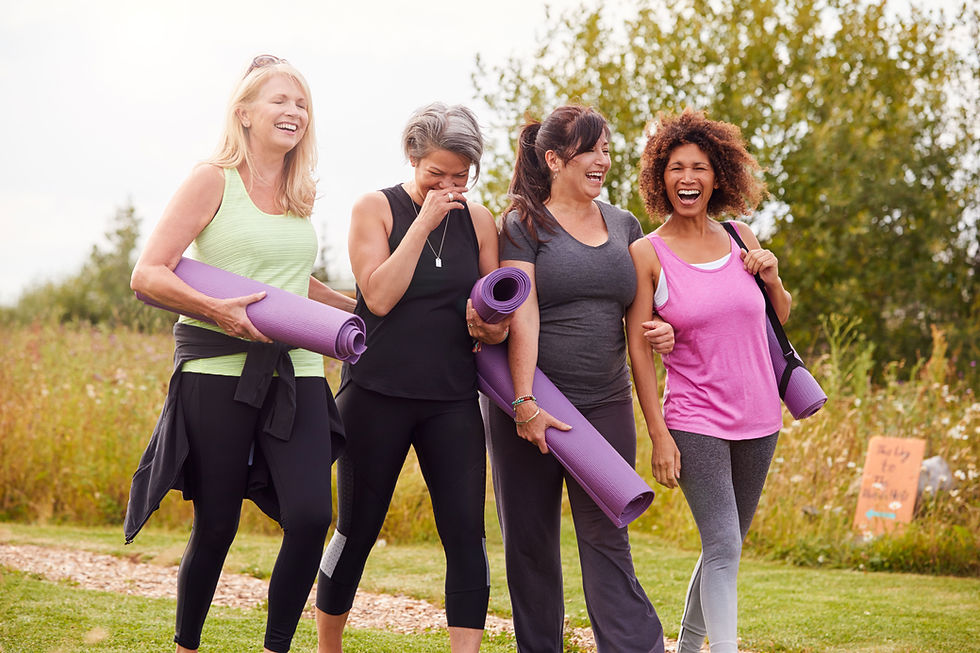Find Balance on the Yoga Mat and in Life
- Jessica Lucey

- Feb 28, 2019
- 3 min read
Balance. It’s not just about standing on one leg without falling. It’s about finding both the strength and lightness in the things we do. In the Yoga Sutras, Patanjali describes asanas (postures) as having qualities of both effort and ease. But what does this mean practically?

On the Mat
I used to be a pusher. I would wiggle, pull, and push my way into all the poses and do double chaturangas; all with the goal of doing everything perfectly. It was fine for a time, but then my body started rebelling against me. My jaw started hurting because I would clench it every time I would concentrate too much or try too hard. My back was hurting and I kept getting minor injuries because of all the pushing and forcing.
Once I finally realized what was going on, I took it back and softened. Only, I softened too much. I went to the other extreme where I wasn’t putting in enough effort. My body felt lazy and unsupported, so I started putting in a little more effort. Eventually, through trial and error, I was able to find the middle ground.
It’s in that pendulum of change --- correcting and counter correcting --- where we eventually refine and find the balance between effort and ease. It’s in the paying attention to the how the body feels and how the breath moves that we can gauge how much exertion and softness we need to apply. It’s in practicing again and again that we’re able to make those small adjustments that bring us back to balance quicker, instead of those large over corrections.
During practice, check in with these questions:
Do I feel both grounded down and lifted up?
Is my breathing steady and even?
Where is the engagement (effort) and expansion (ease)?
The practice as a whole
This search for balance can be found throughout the yoga practice. Within each posture, there is effort (engagement of muscles) and ease (releasing of muscle and expansion of breath). There is a grounding down and a lifting up. The practice is also separated into the postures that elevate the heart rate and stimulate the nervous system, and the postures that slow the heart rate and calm the nervous system. There is action and there is rest. There are even different types of yoga practices that are more energetic and less energetic: vinyasa or power yoga versus gentle or restorative yoga.
During the practice, honor both the active parts and the resting parts (especially savasana). When choosing a class, see what it feels like to tap into a practice at the opposite end of the energy spectrum than you’re used to in an attempt to find balance that way.

Taking it off the mat
It’s said that the thoughts and actions that we fall into during our yoga practice are a reflection of how we behave off the mat. When I was a pusher in my yoga practice, I was also rushing from one thing to the next trying to get everything done perfectly in the real world too. Use your practice to tell you how you're acting when you're off the mat in order to find balance where it matters the most: life off the mat. The things we learn during practice are meant to teach us how to live when we’re not making funny shapes.
We, as a society in general, are doing-doing-doing so much all the time that there’s little or no time for rest. In fact, being busy is often glorified. However, this also means that the body is stuck in doing mode: the sympathetic, fight or flight, nervous system response that pumps adrenaline into the body, raises the heart rate, and activates muscles. There is no chance or opportunity to switch into being mode: the parasympathetic, rest and digest, nervous system response that repairs and rejuvenates the body. What this means is that eventually the body gets so worn out from going-going-going that the only way for it to rest is to get sick. Before that happens, balance the fast pace with something that slows you down.
Try these things that nurture and rest instead of stimulate:
Take a walk outside. Extra points if you leave the technology at home.
Take the time to sit down for a meal and notice what you’re eating.
Stop multitasking.
Take a yoga class
In this world of “try harder, do more”, take the time to try to do less. Find your balance of effort and ease.



Comments